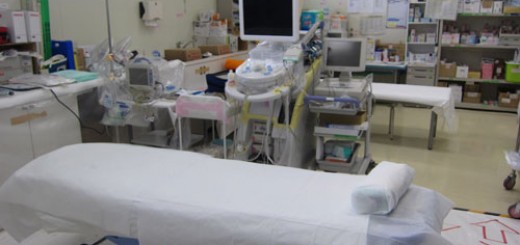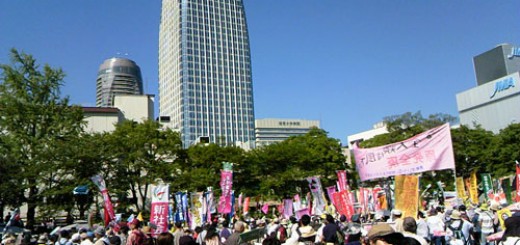Statement Concerning the Crises at Fukushima Nuclear Power Plants Citizens’ Nuclear Information Center (Tokyo)
March 15, 2011
1. The recent accidents at Fukushima Daiichi and Fukushima Daini Nuclear Power Plants are severe and beyond the scope of nuclear-reactor design conditions. An extremely serious situation is continuing.
2. The most effective way to avoid being affected by these accidents is to put distance between oneself and those nuclear power plants. It would be best if you could get as far away as possible from Fukushima Nuclear Power Plants. If you are unable to get away, please stay indoors and avoid exposure to the open air. Take care never to expose yourself to rain.
3. It is not easy to judge how far is a safe distance from the nuclear power plants. In order to make this judgment, precise information is necessary regarding radioactivity levels and weather conditions. In addition, it is necessary to property forecast the possible future developments of the accidents. The information released by the Japanese government and Tokyo Electric Power Company (TEPCO), the latter of which is the operator of the plants, is definitely not sufficient. The two organizations should promptly release accurate information to enable this judgment to be made.
4. The facts we have as of March 15, 2011 are as follows:
(1) Fukushima Daiichi’s Unit 2 reactor does not have sufficient nuclear-fuel cooling capabilities and its nuclear fuel has been exposed for a long time. Steam including radioactive material has been being released from the containment vessel from a few days ago to reduce internal pressure. The pressure suppression chamber, which is part of the containment vessel that is the last defence against release of radioactive material, has been partially damaged, and radioactive material is being emitted from there as well. A great deal more radioactive material may be released from Unit 2 as a result of the drop in the cooling-water level in the reactor and damage to the containment vessel.
(2) In terms of nuclear fuel cooling capabilities, Fukushima Daiichi’s Unit 1 and 3 reactors are also impaired. Steam including radioactive material has been being released from their containment vessels from a few days ago to reduce internal pressure. Seawater is currently being supplied into them, but they may enter the same state in which Unit 2 is currently placed.
(3) When the earthquake occurred, Fukushima Daiichi’s Unit 4 to 6 reactors were undergoing periodic inspections and were not in operation. However, Unit 4 has experienced a hydrogen explosion. The probable reason of the explosion is a drop in the water level of the spent-nuclear-fuel pool. This indicates that the safety of Units 4 to 6 is questionable.
(4) There have been concerns about the cooling capabilities of Fukushima Daini’s Units 1 to 4 reactors. TEPCO’s press release says that all the four units have achieved cold shut down (100°C or lower) and that external power supply has been secured, but another TEPCO press release indicates that part of the plants have showed increased temperature. The reactors need to be cooled down continually for a long time, and require careful monitoring.
(5) Fukushima Daiichi has six reactors adjacent to each other, and Fukushima Daini has four adjacent to each other. If there is an accident at one reactor, it is highly likely to influence other reactors in the plant, which may produce even more severe conditions.
CNIC
Citizens’ Nuclear Information Center
Akebonobashi Co-op 2F-B, 8-5 Sumiyoshi-cho,
Shinjuku-ku, Tokyo, 162-0065, Japan
TEL.03-3357-3800
FAX.03-3357-3801
Philip White
International Liaison Officer
Citizens’ Nuclear Information Center
Phone: 81-3-3357-3800 (office)



